Powerful conservation tech tools are gathering more data in the field than ever before. But without equally powerful and effective data management and processing tools, that data - no matter how groundbreaking or interesting - will not be able to reach its full potential for impact.
Data management can sometimes seem intimidating to conservationists, especially those just getting started in the world of conservation tech or experimenting with new data collection methods. While every community member's workflow and preferred data management and processing methods may be different, this group can serve as a resource to explore what works for others, share your own advice, and develop new strategies together.
Below are a few WILDLABS events dealing with datasets collected from various conservation tech tools:
Nicole Flores: How do I get started with Wildlife Insights?
Jamie Macaulay: How do I analyse large acoustic datasets using PAMGuard?
Sarah Davidson: Tools for Bio-logging Data in Conservation
Whatever conservation tech tools you work with, and whatever your preferred data management methods, we hope you'll find something helpful and effective in this group when you become a member!
Researcher at Forest Research Institute Baden-Wuerttemberg, Passive acoustic monitoring of woodcock
- 0 Resources
- 0 Discussions
- 5 Groups


- 0 Resources
- 18 Discussions
- 18 Groups
Msc student on wildlife management and conservation
- 0 Resources
- 0 Discussions
- 8 Groups
Wildlife conservation enthusiast, looking to gain more experience & knowledge
- 0 Resources
- 0 Discussions
- 4 Groups
- @NevilleCLS
- | He/Him
CLS (Collecte Localisation Satellites)
- 0 Resources
- 1 Discussions
- 14 Groups
- 0 Resources
- 0 Discussions
- 4 Groups
- @capreolus
- | he/him
Capreolus e.U.
wildlife biologist with capreolus.at



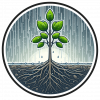

- 1 Resources
- 64 Discussions
- 16 Groups
- @tmcgrath
- | He / Him
Geographer, Program Manager, Engineering Manager
- 0 Resources
- 0 Discussions
- 8 Groups
- @Mumonkan
- | he / him
Wild Me
Software Engineer for Wildlife Conservation
- 0 Resources
- 4 Discussions
- 11 Groups
- @frides238
- | She/her
Hi! I am Frida Ruiz, a current Mechanical Engineering undergraduate student very interested in habitat restoration & conservation. I am excited to connect with others and learn about technology applications within applied ecology & potential research opportunities
- 0 Resources
- 2 Discussions
- 13 Groups
- 0 Resources
- 0 Discussions
- 7 Groups
- 1 Resources
- 4 Discussions
- 2 Groups
Are you passionate about wildlife conservation and eager to contribute to meaningful research efforts? Lion Landscapes is seeking a dedicated and proactive Research Assistant to join their team.
11 April 2024
Space for Giants is looking for a Conservation Science Intern to help support the Conservation Science team in managing data flow, storage, and analysis to maximize the efficiency of monitoring and evaluating impact.
9 April 2024
In a recent publication we tested Underwater Passive Acoustic Monitoring (UPAM) as a feasible non-invasive technique to study the calling behavior of therathened aquatic Andean frogs under natural conditions in the...
6 April 2024
Article
You’re invited to the WILDLABS Variety Hour, a monthly event that connects you to conservation tech's most exciting projects, research, and ideas. We can't wait to bring you a whole new season of speakers and...
22 March 2024
SMART Global Congress, the first global gathering of conservation professionals using SMART, was held in Windhoek, Namibia from March 10-13. Here is a snapshot of what we learned!
19 March 2024
Join our multi-national team at the AI for Biodiversity Change Global Climate Center! We're hiring a Research Data Manager & Tech Coordinator at Ohio State. Support cutting-edge research on climate change &...
15 March 2024
Emerging trends for Nature-Based Solutions project assessments
8 March 2024
Catch up on the conservation tech discussions and events that happened during World Wildlife Day 2024!
7 March 2024
Join us to help prevent biodiversity loss! Understory is hiring a postdoc to lead R&D Development on generalizing Computer Vision models for vegetation identification across space/time/phenotypes.
29 February 2024
Is there really a sustainability data deficiency? We don’t think so.
29 February 2024
Careers
The SMART Partnership is hiring a Program Director to oversee all aspects of the partnership's operations
21 February 2024
We invite applications for the third Computer Vision for Ecology (CV4E) workshop, a three-week hands-on intensive course in CV targeted at graduate students, postdocs, early faculty, and junior researchers in Ecology...
12 February 2024
April 2024
event
event
July 2024
October 2024
March 2024
event
December 2023
| Description | Activity | Replies | Groups | Updated |
|---|---|---|---|---|
| Cool project! (I would definitely match with the second photo on your example). Might be a project that you can run on Zooniverse instead of a Google Form? https://www.... |
|
Camera Traps, Data management and processing tools, Software and Mobile Apps | 8 minutes 53 seconds ago | |
| Hi folks!@Chelsea_Smith from Fauna & Flora joined last month's variety hour to share more about Fauna & Flora's work with... |
|
Remote Sensing & GIS, Data management and processing tools, Protected Area Management Tools | 1 day 22 hours ago | |
| Can't beat Dan's list! I would just add that if you're interested in broader protected area management, platforms like EarthRanger and SMART are amazing, and can integrate... |
|
Data management and processing tools, Camera Traps, Conservation Tech Training and Education | 2 days 7 hours ago | |
| Hi Matthew,Thanks for your advice, this is really helpful!I'm planning to use it in a seagrass meadow survey for a series of ~20 drops/sites to around 30 m, recording for around... |
|
Acoustics, AI for Conservation, Data management and processing tools, Emerging Tech, Sustainable Fishing Challenges | 4 days 2 hours ago | |
| This is so cool @Mauricio_Akmentins - congrats and look forward to seeing your project evolve! |
|
Acoustics, Biologging, Climate Change, Conservation Tech Training and Education, Data management and processing tools, Emerging Tech, Open Source Solutions, Protected Area Management Tools, Sensors, Software and Mobile Apps | 1 week 4 days ago | |
| First things first, our team, @jcguerra10, @hefca, and myself, is thrilled to share with immense pride... |
|
Build Your Own Data Logger Community, Data management and processing tools, Sensors | 2 weeks 5 days ago | |
| This thread is off-topic in this conversation, so happy to continue it in the other one. However, just noting - your system is one example, but not the only one - there are... |
|
Human-Wildlife Conflict, Data management and processing tools | 3 weeks 3 days ago | |
| Thank you Carly, I will definitely take a look. |
|
Acoustics, Biologging, Climate Change, Conservation Tech Training and Education, Data management and processing tools, Remote Sensing & GIS, Software and Mobile Apps | 4 weeks 1 day ago | |
| Hello Friends,Its amazing to see the growing number of organisations working in biodiversity conservation.Biodiversity stories can have a... |
|
Data management and processing tools, Software and Mobile Apps | 1 month ago | |
| Were you ever able to solve the problem? Interestingly enough, I begin a seal bio-logging study next year! Also, you are correct. The errors were occurring during short bout... |
|
Data management and processing tools | 1 month 2 weeks ago | |
| Thank you! This is encouraging. It's also nice to know that Saul is approachable for problem-solving issues. |
|
Data management and processing tools | 2 months 3 weeks ago | |
| Am working on similar AI challenge at the moment. Hoping to translate my workflow to wolves in future if needed. We all are little overstretched but it there is no pressing... |
|
Camera Traps, AI for Conservation, Build Your Own Data Logger Community, Data management and processing tools, Marine Conservation, Protected Area Management Tools, Remote Sensing & GIS | 2 months 3 weeks ago |
Image analysis with volunteers
26 January 2024 6:30pm
27 January 2024 9:01pm
Thank you! This is encouraging. It's also nice to know that Saul is approachable for problem-solving issues.
Jupyter Notebook: Aquatic Computer Vision
25 January 2024 5:50am
26 January 2024 1:46pm
This is quite interesting. Would love to see if we could improve this code using custom models and alternative ways of processing the video stream.
27 January 2024 4:07am
This definitely seems like the community to do it. I was looking at the thread about wolf detection and it seems like people here are no strangers to image classification. A little overwhelming to be quite honest 😂
While it would be incredible to have a powerful model that was capable of auto-classifying everything right away and storing all the detected creatures & correlated sensor data straight into a database - I wonder if in remote cases where power (and therefore cpu bandwidth), data storage, and network connectivity is at a premium if it would be more valuable to just be able to highlight moments of interest for lab analysis later? OR if you do you have cellular connection, you could download just those moments of interest and not hours and hours of footage?
27 January 2024 6:11am
Am working on similar AI challenge at the moment. Hoping to translate my workflow to wolves in future if needed.
We all are little overstretched but it there is no pressing deadlines, it should be possible to explore building efficient model for object detection and looking at suitable hardware for running these model on the edge.
Analysis Methods for Localization with Networks of Fixed Radio Receivers
26 January 2024 2:36pm
Need advice - image management and tagging
12 January 2024 7:55pm
15 January 2024 8:47pm
Interesting, Iʻll give it a shot. Looks like this could save me some time.
Thanks for the explanation @wade!
24 January 2024 5:16pm
I have no familiarity with Lightroom, but the problem you describe seems like a pretty typical data storage and look up issue. This is the kind of problem that many software engineers deal with on a daily bases. In almost every circumstance this class of problem is solved using a database.
In fact, a potentially useful analysis is that the Lightroom database is not providing the feature set you need.
It seems likely that you are not looking for a software development project, and setting up you own DB would certainly require some effort, but if this is a serious issue for your work, you hope to scale your work up, or bring many other participants into your project, it might make sense to have an information system that better fits your needs.
There are many different databases out there optimized for different sorts of things. For this I might suggest taking a look at MongoDB with GridFS for a couple of reasons.
- It looks like you meta data is in JSON format. Many DBs are JSON compatible, but Mongo is JSON native. It is especially good at storing and retrieving JSON data. Its JSON search capabilities are excellent and easy to use. It looks like you could export your data directly from Lightroom into Mongo, so it might be pretty easy actually.
- Mongo with the GridFS package is an excellent repository for arbitrarily large image files.
- It is straightforward to make a Mongo database accessible via a website.
- They are open source (in a manner of speaking) and you can run it for free.
Disclaimer: I used to work for MongoDB. I don't anymore and I have no vested interest at all, but they make a great product that would really crush this whole class of problem.
25 January 2024 8:32am
Hi!
I would take a look at
Although developed for camera trap imagery, it is by no means restricted to such.
Cheers,
Lars
How are Outdoor Fire Detection Systems Adapted for Small Forest Areas, Considering the Predominance of Indoor Fire Detectors?
8 January 2024 4:27pm
22 January 2024 6:35pm
Fire detection is a sort of broad idea. Usually people detect the products of fire, and most often this is smoke.
Many home fire detectors in the US use a radioactive source and measure the absorption of the radiation by the air. More smoke means more absorption.
For outdoor fire detection, PM2.5 can be a very good smoke proxy, and outdoor PM2.5 sensing is pretty accessible.
This one is very popular in my area.
Wildlife Conservation for "Dummies"
9 January 2024 10:02pm
10 January 2024 11:24pm
Maybe this is obvious, but maybe it's so obvious that you could easily forget to include this in your list of recommendations: encourage them to hang out here on WILDLABS! I say that in all seriousness: if you get some great responses here and compile them into a list, it would be easy to forget the fact that you came to WILDLABS to get those responses.
I get questions like this frequently, and my recommended entry points are always (1) attend the WILDLABS Variety Hour series, (2) lurk on WILDLABS.net, and (3) if they express a specific interest in AI, lurk on the AI for Conservation Slack.
I usually also recommend that folks visit the Work on Climate Slack and - if they live in a major city - to attend one of the in-person Work on Climate events. You'll see relatively little conservation talk there, but conservation tech is just a small subset of sustainability tech, and for a new person in the field, if they're interested in environmental sustainability, even if they're a bit more interested in conservation than in other aspects of sustainability, the sheer number of opportunities in non-conservation-related climate tech may help them get their hands dirty more quickly than in conservation specifically, especially if they're looking to make a full-time career transition. But of course, I'd rather have everyone working on conservation!
13 January 2024 3:14am
Some good overview papers I'd recommend include:
- Besson, M., Alison, J., Bjerge, K., Gorochowski, T. E., Høye, T. T., Jucker, T., ... & Clements, C. F. (2022). Towards the fully automated monitoring of ecological communities. Ecology Letters, 25(12), 2753-2775.
- Speaker, T., O'Donnell, S., Wittemyer, G., Bruyere, B., Loucks, C., Dancer, A., ... & Solomon, J. (2022). A global community‐sourced assessment of the state of conservation technology. Conservation Biology, 36(3), e13871.
- WILDLABS-led research! Led by @TaliaSpeaker and @StephODonnell
- Lahoz-Monfort, J. J., & Magrath, M. J. (2021). A comprehensive overview of technologies for species and habitat monitoring and conservation. BioScience, 71(10), 1038-1062.
- Tuia, D., Kellenberger, B., Beery, S., Costelloe, B. R., Zuffi, S., Risse, B., ... & Berger-Wolf, T. (2022). Perspectives in machine learning for wildlife conservation. Nature communications, 13(1), 792.
- Stowell, D. (2022). Computational bioacoustics with deep learning: a review and roadmap. PeerJ, 10, e13152.
- I'm biased towards bioacoustics because that's what I focus on, but this regardless this is an excellent horizon scan of AI/ML for conservation and acoustics!
- Borowiec, M. L., Dikow, R. B., Frandsen, P. B., McKeeken, A., Valentini, G., & White, A. E. (2022). Deep learning as a tool for ecology and evolution. Methods in Ecology and Evolution, 13(8), 1640-1660.
I'd also encourage you to follow the #tech4wildlife hashtags on social media!
15 January 2024 4:27pm
I'm also here for this. This is my first comment... I've been lurking for a while.
I have 20 years of professional knowledge in design, with the bulk of that being software design. I also have a keen interest in wildlife. I've never really combined the two; and I'm starting to feel like that is a waste. I have a lot to contribute. The loss of biodiversity is terrifying me. So I’m making a plan that in 2024 I’m going to combine both.
However, if I’m honest with you – I struggle with where to start. There are such vast amounts of information out there I find myself jumping all over the place. A lot of it is highly scientific, which is great – but I do not have a science background.
As suggested by the post title.. a “Wildlife Conservation for Dummies” would be exactly what I am looking for. Because in this case I’m happy to admit I am a complete dummy.
Opinions or experience with Firetail movement analysis software?
29 December 2023 9:39pm
9 January 2024 9:15am
Hi Travis!
I'm a developer in the Firetail team and also worked with R a lot during my PhD.
The goals of both projects are quite different. Using Firetail definitely does not mean you can no longer use R or vice versa. Firetail's focus is on the interactive, visual exploration and annotation of your data. It is meant to be used by scientists, conservationists or stakeholders analysing their projects.
It may be used to pinpoint regions/time-windows and visualize data suitable for downstream analysis in R, or generate reports regularily. Firetail won't replace algorithm X using a distinct set of parameters as required by reviewer R, but it will help to understand your data and tell the story.
The basic workflows of Firetail are meant to be intuitive and we seek to support a wide range of data out of the box (plus, 1:1 customer service when you run into problems).
We also implement additional workflows based on ideas that we receive from you all and seek to integrate interfaces to whatever upstream/downstream tools you require for your daily work.
Feel free to contact me ([email protected]) for specific questions or just use this thread :)
Best,
Tobias
12 January 2024 12:48am
Hi Tobias!
This is great to hear. This seems to be exactly what I am looking for as I approach my accelerometry data, looking to identify certain behaviors through thresholds then manually verify. This sounds like a great compliment to what I've done in R with the data so far. Thanks for the info! I will most definitely give this a try!
I may take you up on the offer of emailing you with a couple quick questions once I start (I appreciate that!)
Best,
Travis
13 January 2024 6:10am
Perfect. Looking forward to hearing from you!
Presentation opportunity: Text analysis for conservation (NACCB 2024)
8 January 2024 4:05pm
13th International Conference on Climate Informatics
18 December 2023 12:20pm
Data Viz Inspo for the Holidays
11 December 2023 8:42pm
Automatic extraction of temperature/moon phase from camera trap video
29 November 2023 1:15pm
1 December 2023 2:35pm
Hi Lucy
As others have mentioned, camera trap temperature readouts are inaccurate, and you have the additional problem that the camera's temperature can rise 10C if the sun shines on it.
I would also agree with the suggestion of getting the moon phase data off the internet.
1 December 2023 2:38pm
Do you need to do this for just one project? And do you use the same camera make/model for every deployment? Or at least a finite number of camera makes/models? If the number of camera makes/models you need to worry about is finite, even if it's large, I wouldn't try to solve this for the general case, I would just hard-code the pixel ranges where the temperature/moon information appears in each camera model, so you can crop out the relevant pixels without any fancy processing. From there it won't be trivial, exactly, but you won't need AI.
You may need separate pixel ranges for night/day images for each camera; I've seen cameras that capture video with different aspect ratios at night/day (or, more specifically, different aspect ratios for with-flash and no-flash images). If you need to determine whether an image is grayscale/color (i.e., flash/no-flash), I have a simple heuristic function for this that works pretty well.
Assuming you can manually define the relevant pixel ranges, which should just take a few minutes if it's less than a few dozen camera models, I would extract the first frame of each video to an image, then crop out the temperature/moon pixels.
Once you've cropped out the temperature/moon information, for the temperature, I would recommend using PyTesseract (an OCR library) to read the characters. For the moon information... I would either have a small library of images for all the possible moon phases for each model, and match new images against those, or maybe - depending on the exact style they use - you could just, e.g., count the total number of white/dark pixels in that cropped moon image, and have a table that maps "percentage of white pixels" to a moon phase. For all the cameras I've seen with a moon phase icon, this would work fine, and would be less work than a template matching approach.
FYI I recently wrote a function to do datetime extraction from camera trap images (it would work for video frames too), but there I was trying to handle the general case where I couldn't hard-code a pixel range. That task was both easier and harder than what you're doing here: harder because I was trying to make it work for future, unknown cameras, but easier because datetimes are relatively predictable strings, so you know when you find one, compared to, e.g., moon phase icons.
In fact maybe - as others have suggested - extracting the moon phase from pixels is unnecessary if you can extract datetimes (either from pixels or from metadata, if your metadata is reliable).
5 December 2023 10:09pm
camtrapR has a function that does what you want. i have not used it myself but it seems straightforward to use and it can run across directories of images:
https://jniedballa.github.io/camtrapR/reference/OCRdataFields.html
WILDLABS Awards 2024: Supporting accessible, affordable, and effective innovation for nature
1 December 2023 11:00am
ICOTEQ launch TAGRANGER® system of products
23 November 2023 1:25pm
AWMS Conference 2023
Catch up with The Variety Hour: November 2023
16 November 2023 12:59pm
Insight; a secure online platform designed for sharing experiences of conservation tool use.
7 November 2023 1:01pm
A secure platform designed for those working to monitor & protect natural resources. Insight facilitates sharing experience, knowledge & tools to increase efficiency & effectiveness in conservation. By sharing we reduce time & money spent to find, test, & implement solutions.
DeepFaune: a software for AI-based identification of mammals in camera-trap pictures and videos
14 July 2023 3:14pm
24 October 2023 8:46pm
Hello to all, new to this group. This is very exciting technology. can it work for ID of individual animals? we are interested in Ai for identifying individual jaguars (spots) and andean Bears (face characteristics). Any recommendation? contact? thanks!
German
25 October 2023 8:57am
That's a very interesting question and use case (I'm not from deepfaune). I'm playing with this at the moment and intend to integrate it into my other security software that can capture and send video alerts. I should have this working within a few weeks I think.
The structure of that software is that it is two stage, the first stage identifies that there is an animal and it's bounding box and then there's a classification stage. I intend to merge the two stages so that it behaves like a yolo model so that the output is bounding boxes as well as what type of animal it is.
However, my security software can cascade models. So if you were able to train a single stage classifier that identifies your particular bears, then you could cascade all of these models in my software to generate an alert with a video saying which bear it was.
4 November 2023 4:51am
Hi @GermanFore ,
I work with the BearID Project on individual identification of brown bears from faces. More recently we worked on face detection across all bear species and ran some tests with identifying Andean bears. You can find details in the paper I linked below. We plan to do more work with Andean bears in 2024.
I would love to connect with you. I'll send you a message with my email address.
Regards,
Ed
Movebank tutorial on uploads of tag acceleration and magnetometer data
27 October 2023 2:14pm
5 Trailblazing Wildlife Monitoring Tech Solutions across East Africa. What Monitoring Technologies are you using?
25 October 2023 12:40pm
Lead Data Engineer - Climate Solutions, Open Earth
25 October 2023 11:07am
ZSL Research Fellow (x3 roles)
 Zoological Society of London
Zoological Society of London
20 October 2023 3:34pm
Pre-register for the Basics of R for Ecologists
20 October 2023 1:54pm
Enrollment for Luke Negoita's Basics of R (for ecologists) course is opening in a few days, but this will be the LAST TIME (for a while) that he'll be admitting new students into the course. If you've needed to learn R for ecology, this course has everything you need (his words!)
Restoring the Mara Elephant Population Using Coexistence Tech Solutions with Mara Elephant Project's Wilson Sairowua
 Wilson Sairowua
Wilson Sairowua
20 October 2023 1:31pm
PhD Opportunity - Exploring synergies between statistical ecology and statistical genomics
 University of St Andrews
University of St Andrews
20 October 2023 12:56pm
PhD Opportunity - Distance sampling with milder assumptions
 University of St Andrews
University of St Andrews
20 October 2023 12:53pm
PhD Opportunity - Causal inference and trial emulation for ecological observational data
 University of St Andrews
University of St Andrews
20 October 2023 12:45pm
PhD Opportunity - Movement through space and time, realistic movement for species abundance methods
 University of St Andrews
University of St Andrews
20 October 2023 12:33pm
Marine Flyways - Seabird Tracking Database
20 October 2023 12:23pm
To celebrate #WMBD, BirdLife is excited to share the newly identified Marine Flyways!! Seabird tracking data were shared by over 60 researchers from 48 long-distance migratory species and have revealed SIX MarineFlyways. They've created an awesome animation to go along with it!









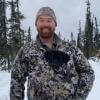








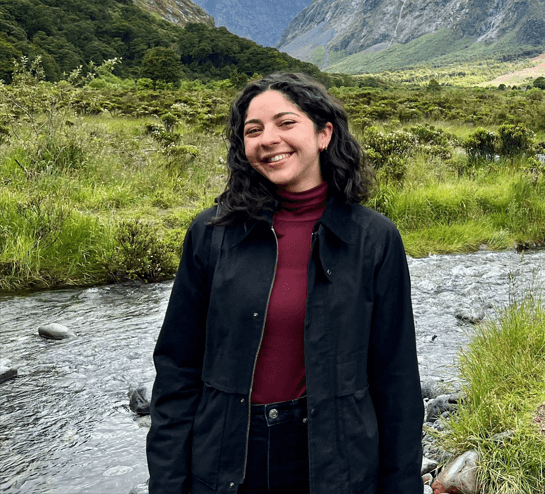


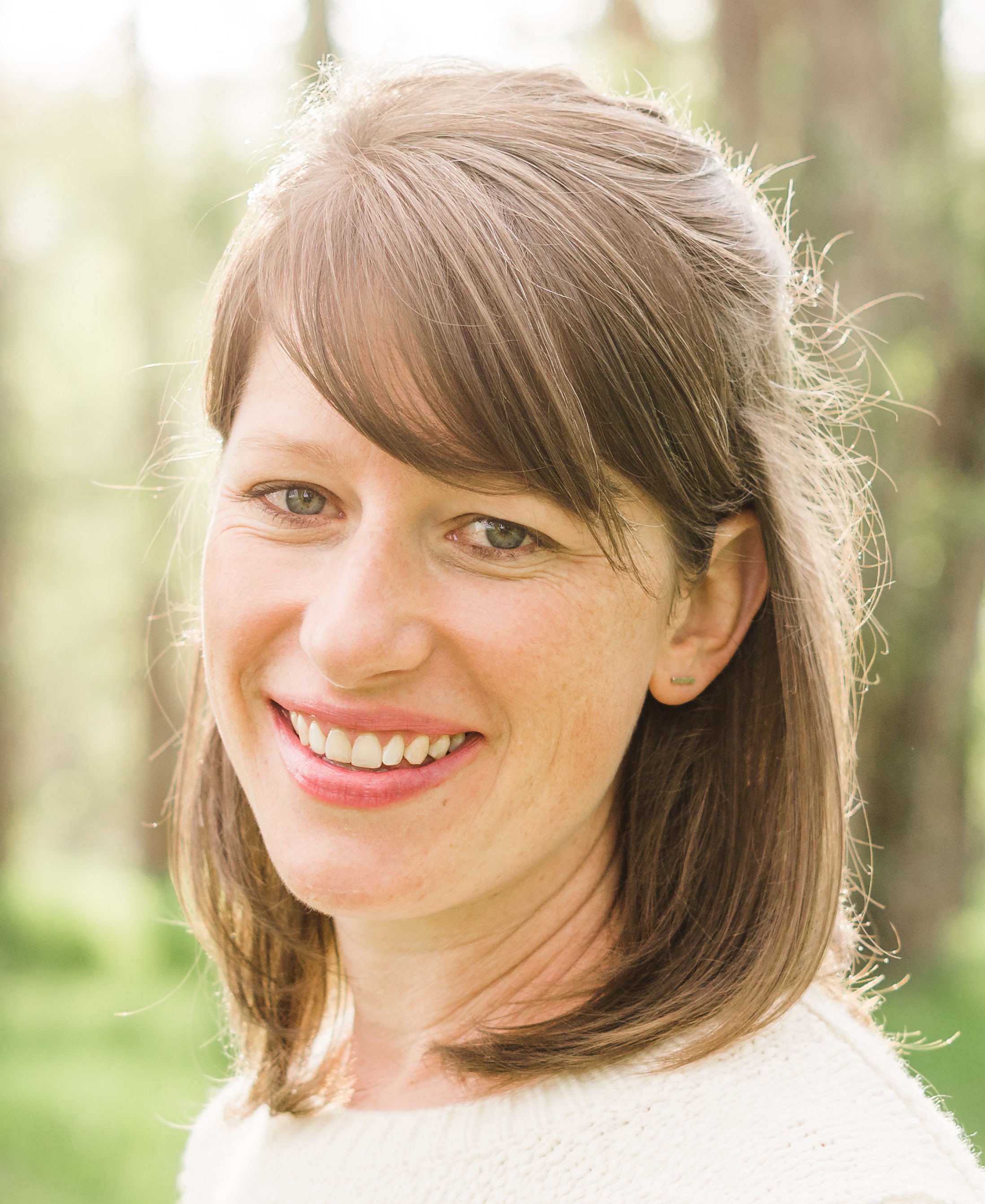


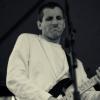








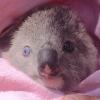



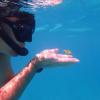





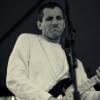













27 January 2024 9:14am
I have a little experience with Timelapse and would say it is definetely worth the invested time.
The developer Saul Greenberg has made a ton of documentation on its use and is also very approachable in person, if you have any issues.
I can only highly recommend it.